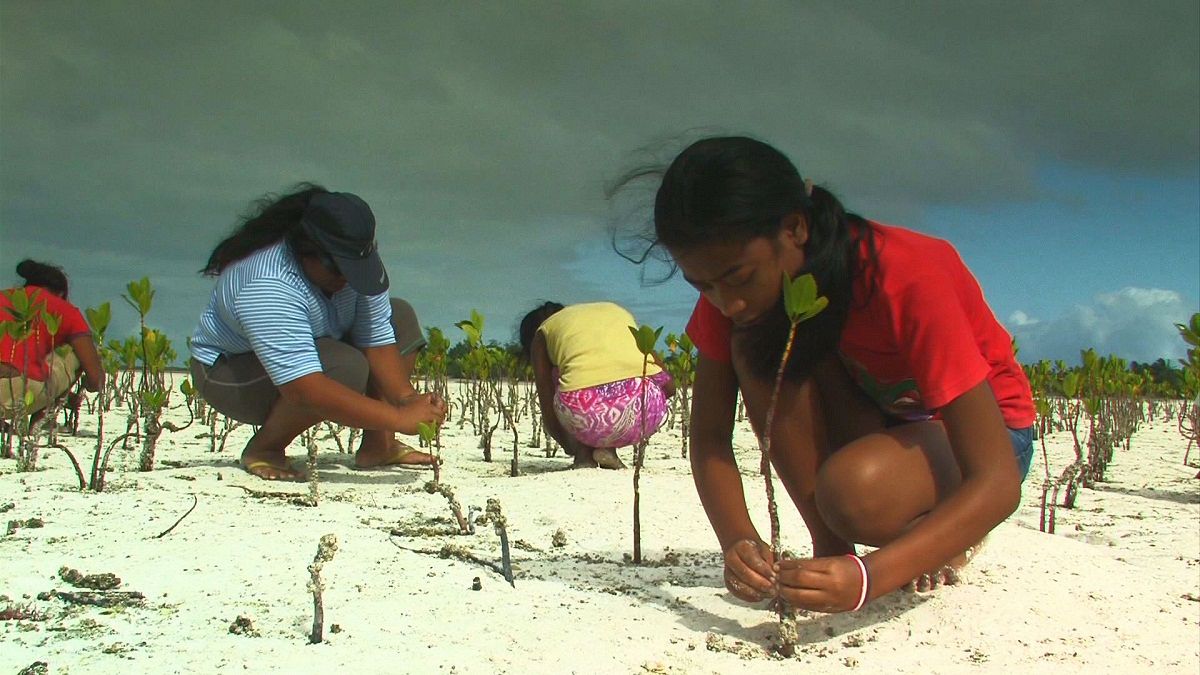What if your county needs more agriculture than engineering graduates? Can education be manipulated to raise awareness of certain issues facing the country? And if so how? We look at projects aiming to educate youngsters about a range of issues, from the environment right through to social needs.
This new edition of Learning World looks at two examples from the Pacific and one in Africa on how communities are tailoring their teaching to fit their circumstances.
In many countries, education aims to produce skilled workers capable of tackling local challenges. What’s the point of producing historical researchers for example, when a country is struggling to grow enough food? So educational programmes are manipulated in order to produce qualified people who can help solve national problems.
The Galapagos Islands are famous for their marine biodiversity, and have of course their connection to Charles Darwin. The islands were removed from the UN Heritage Committee’s list of endangered sites in 2010 in part due to projects training young people in conservation, environmental issues and ecology.
Thanks to a unique variety of species, the Galapagos are a natural laboratory in the wild. Yet the islands also host over 5,200 primary and secondary students through a network of 20 public and private schools.
On Santa Cruz Island Tomás de Berlanga school is an interesting example of how education in remote places may be a challenge but also offers an extraordinary prize.
From the Pacific Ocean to Burkina Faso in Africa, one of the world’s poorest countries. Agriculture is the main source of income for most people but less than a quarter of the land is farmed. We look at one project which is teaching agricultural techniques alongside other practical skills like carpentry and sewing.
Burkina Fasso: building skills
Dédougou is a medium-sized town in the Sahel region of Africa, in Burkina Faso. 80% of the inhabitants are farmers. Their livelihood depends on rainfall. The problem in this semi-arid region is that it only rains, on average, four months a year. So, how do you survive the entire 12 months? You adapt. People must find other work to get through the year. And education must adapt as well to prepare young people to survive in this difficult climate.
Finally, returning to the Pacific Ocean, we visit Kiribati, a tiny island nation, where climate change is a major preoccupation. Here, UNICEF has been providing lessons so that people are better informed and have a variety of ways of tackling it.
Kiribati: climate class
Kiribati is one of the world’s most vulnerable countries, spread over 33 low-lying atolls in the central and western Pacific region.
Its people are experiencing a disaster that is slowly and steadily eroding their culture and home.
Their low-lying atolls are pounded day and night by rising sea levels, which infiltrate scarce supplies of fresh water and the limited patches of fertile land.
More than 100 videos have been produced by young people from across the Pacific, taking their local experience global. They are now available online on the Unicef Pacific Youtube channel.
http://www.unicef.org/infobycountry/kiribati
In addition to UNICEF’s funding of a wide range of national programmes the EU donates 3.2 million euros as part of its WASH, (Water Sanitation and Hygiene), initiative.
http://unfccc.int (PDF)
http://www.kiribatitourism.gov.ki
http://www.unicef.org/infobycountry/kiribati
Story by 20 Minutes newspaper (French)
http://www.unicef.org/french/adolescence/kiribati_57819.html
We look forward to hearing your feedback on our social media pages. And don’t forget our Twitter hashtag is #LEARNWORLD so stay in touch.
